Perennial flowers that stand tall in the garden add depth and texture to the landscape and look striking as backgrounds or centerpieces. Tall perennials make an excellent and beautiful natural border, hedge, or privacy screen.
These flowers are also amazing at camouflaging things in the yard or garden, like an unsightly fence or the neighbor's backyard. This collection of tall perennials all reach above 5-feet when in bloom; they can be used for layering in the flower garden, as a focal point, or to define edges and borders. It's time to take the flower garden to new heights with these incredible tall perennials.
Jump to:
- Torch Lilies/Poker Plants (Kniphofia)
- False Aster (Boltonia asteroides)
- Sweet-Scented Joe Pye Weed (Eutrochium purpureum)
- Goat's Beard (Aruncus dioicus)
- Ironweed (Vernonia sp.)
- Compass Plant (Silphium laciniatum)
- Bush Clover (Lespedeza sp.)
- Ashy Sunflower (Helianthus mollis)
- Coneflowers (Rudbeckia sp.)
- Hardy Hibiscus (Hibiscus moscheutos)
- Blazing Star (Liatris pycnostachya)
- American Beautyberry (Callicarpa americana)
- Hardy Willow-Leaved Jessamine (Cestrum parqui)
- White Ginger Lily (Hedychium coronarium)
Torch Lilies/Poker Plants (Kniphofia)
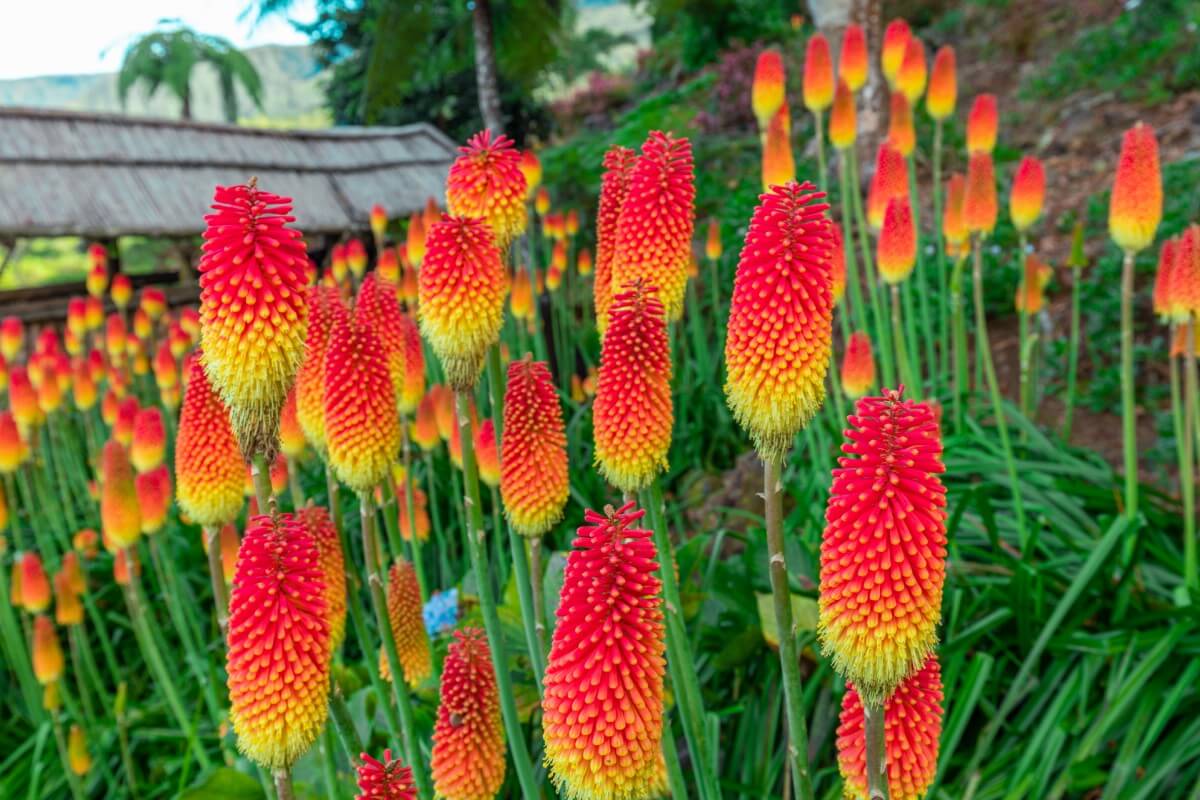
This stunning perennial is an attention grabber with its height and unusual flower arrangement. Torch Lilies, also known as Poker Plants, put on eye-catching displays of brightly colored flowers atop 6ft tall spikes.
They really do look like colorful torches or glowing hot pokers! The flowers are long-lasting, and they change color as they grow, creating a captivating bicolor composition. One feature that makes this tall perennial especially attractive is that the flower spikes tower above the mounds of grass-like foliage; there is nothing to obstruct the blooms, so they shine without restraint. There are so many enchanting Torch lily cultivars to choose from, too.
It's hard to pick favorites, but we are particularly fond of "Nobilis" (orange/red), "Percy's Pride" (yellow/green), and "Bees' Sunset" (orange/yellow).
Torch Lilies are hardy to zones 5-9.
False Aster (Boltonia asteroides)
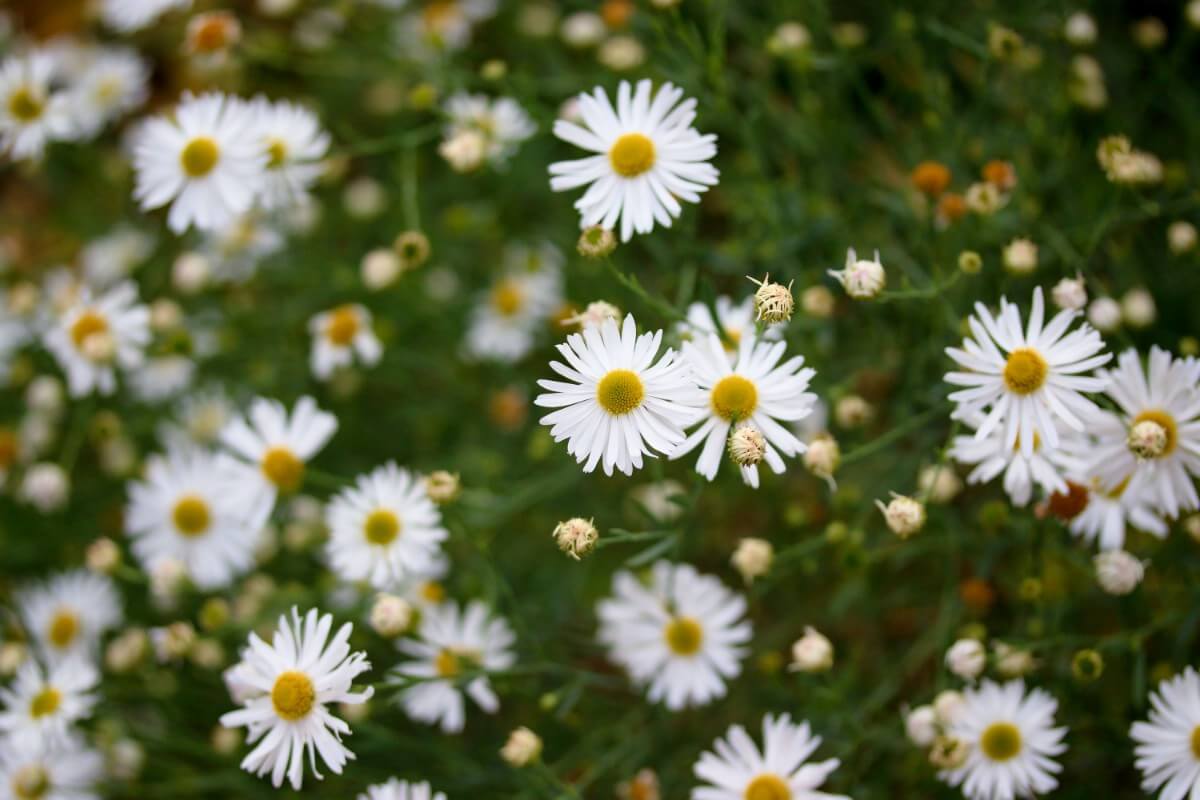
A late-season bloomer, False Aster produces broad clusters of sweet white daisy-like flowers. These plants reach up to 6-feet tall, and when in bloom, are literally covered in flowers.
False Aster is a native plant loved by butterflies, bees, and other pollinators as a late and vital food source. False Aster provides a cheerful array of prolific little flowers; there are pink, purple, blue, and white varieties to light up your garden.
Hardy to zones 3-10.
Sweet-Scented Joe Pye Weed (Eutrochium purpureum)
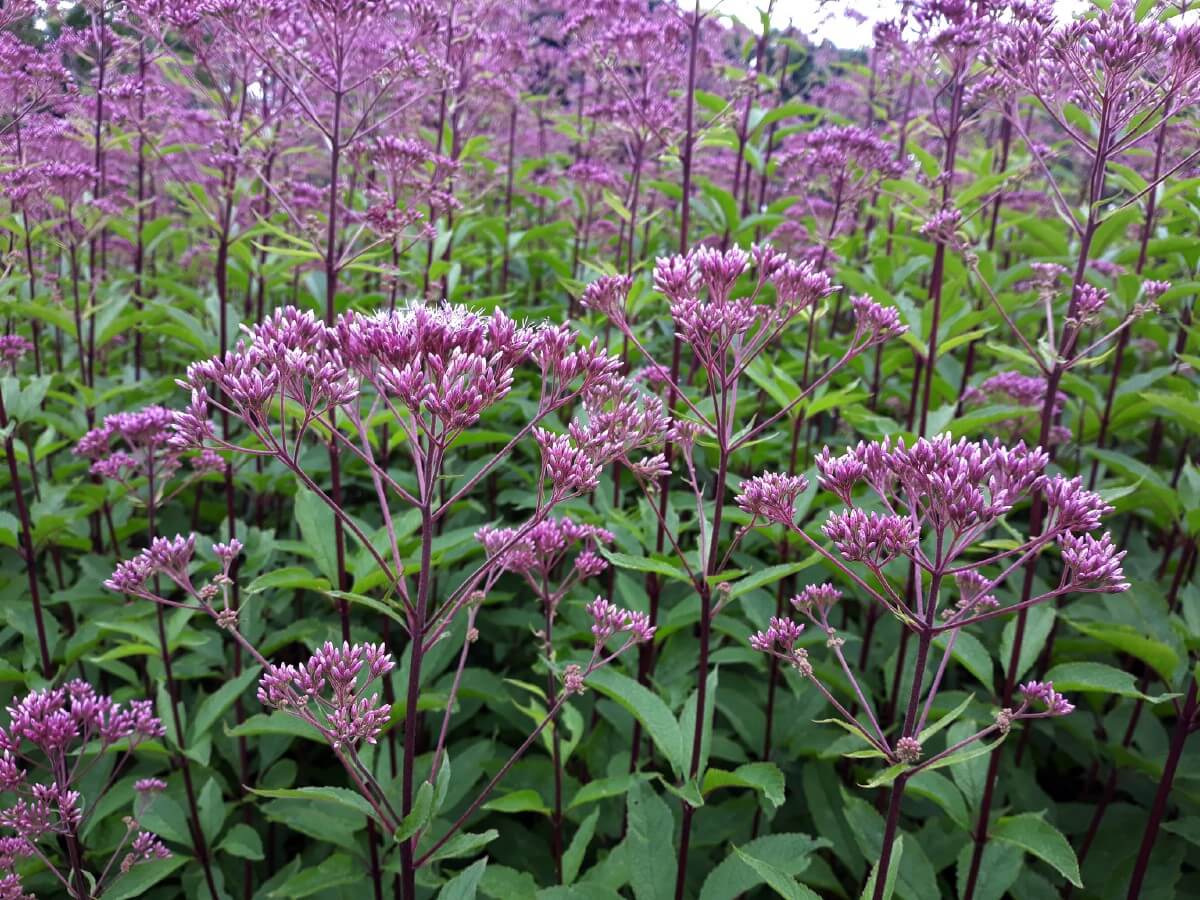
The name is unfortunate; don't let it fool you into not planting this hardy native perennial. Joe Pye Weed averages 5-7 feet tall and when in bloom, is covered with sweet clusters of tiny pinkish-purple flowers. The deep-green foliage is lance-shaped and serrated, attractive on its own, but Joe Pye Weed really shines when in bloom.
Stems grow up above the foliage and produce giant domed groupings of vanilla-scented flowers, drawing in butterflies and bees in droves. Joe Pye Weed is a spectacular border plant and an ideal choice for native or pollinator gardens.
Spotted Joe Pye Weed (Eupatorium maculatum) – There are more than one native Joe Pye Weed species, and this variety is just as impressive as the Sweet-Scented type. It also grows quite tall, between 5-8 feet, and has stunning deep purple-colored stems. This is what sets it apart from the Sweet-Scented. Also, the fragrant blossoms don't have the vanilla scent of the Sweet-Scented variety. Both look amazing in the flower garden as background perennials for smaller mounding plants and flowers or grouped together as a border.
Hardy to zones 3-9.
Goat's Beard (Aruncus dioicus)
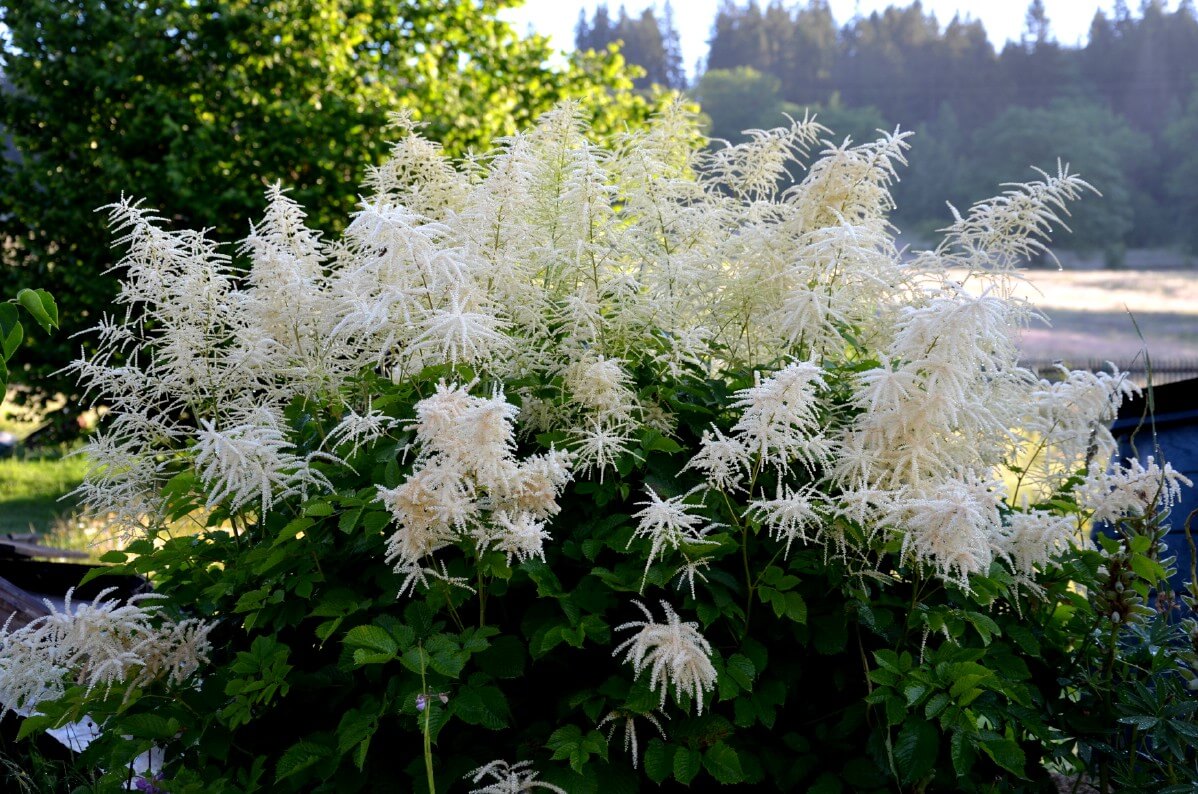
A bushy perennial that easily reaches 6ft at full maturity, Goat's Beard is an attractive background or centerpiece plant. The foliage is tall and fernlike, and the flower stalks are feathery plumes of little white blooms.
Each tiny flower is star-shaped, and when in bloom, the tops of the stalks are so covered in them it looks like fur or a cake covered in rich icing. Goat's Beard spreads out significantly, so make sure you've got space in the garden for this stunner before planting it. Goat's Beard is the host plant for the Dusky Azure butterfly and attracts many other types of butterflies and bees, too.
Hardy to zones 3-9.
Ironweed (Vernonia sp.)
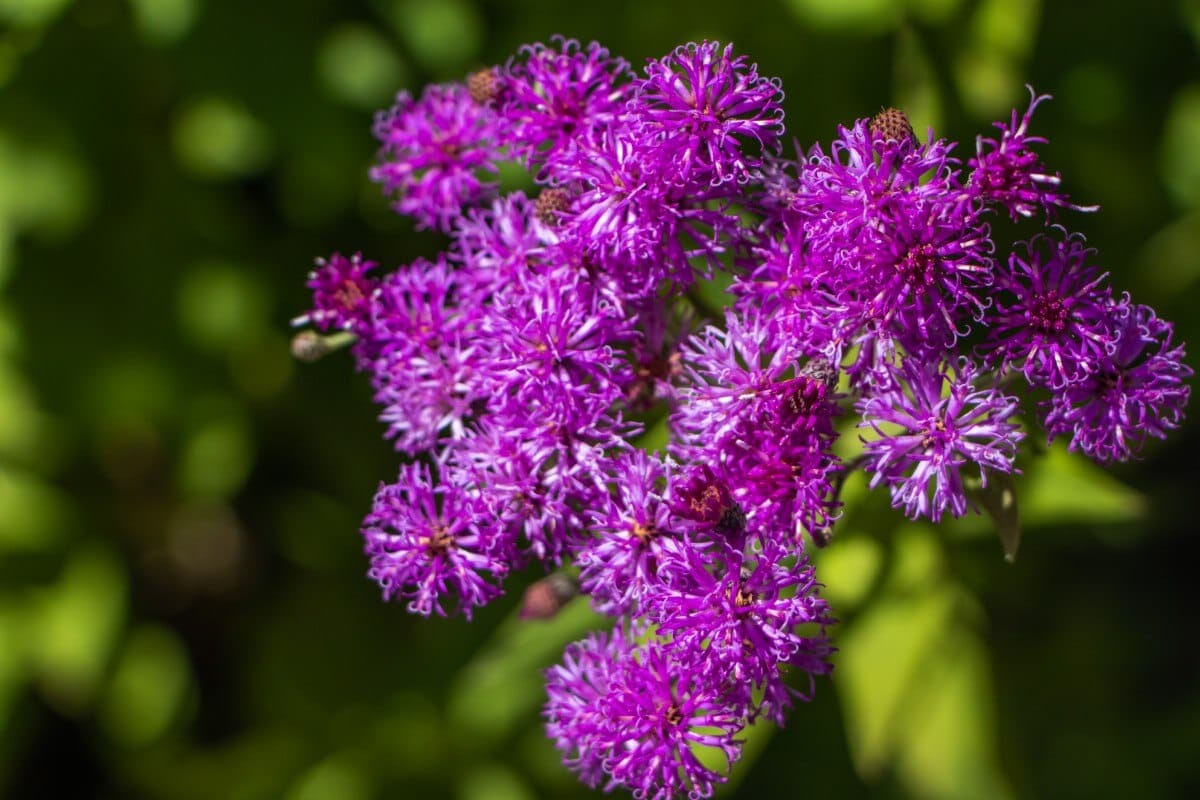
The vivid purple flowers of this native perennial attract tons of bees and butterflies. Ironweed blooms in late summer and early fall, providing an important food resource for late-arriving summer butterflies.
With a height averaging 3-5 feet tall, it's impossible to miss this one when it's in bloom. The flower heads are large, flat clusters of many little brilliant purple blooms, and they grow atop tall singular stalks with minimal green foliage. Ironweed looks fantastic in a native or wildflower garden or as a natural meadow plant.
There are many species of Ironwood plant, each adapted to its native range. Look for the one local to your area. There's Western Ironweed, Prairie Ironweed, Missouri Ironweed, Tall Ironweed, Giant Ironweed, and New York Ironweed. All of them are tall, feature clusters of gorgeous purple blooms, and are beloved by pollinators.
Hardy to zones 5-9.
Compass Plant (Silphium laciniatum)
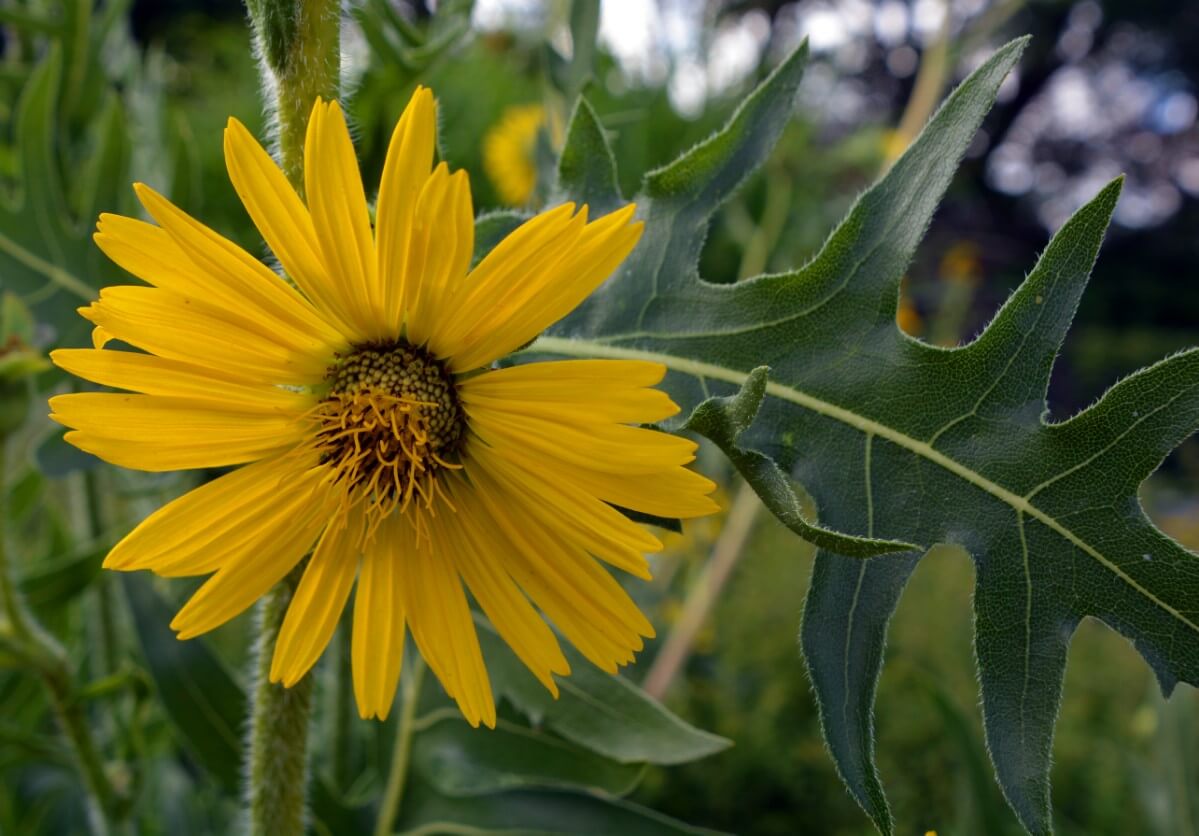
A tall plant that grows multiple sunflower-looking flowers, Compass Plant is a bright and eye-catching specimen for the garden. Compass Plant looks especially appealing planted along a fence, wall, or to block out an unsightly view.
This flower reaches up to 9 feet tall, and the flowers grow in staggered formation up the hardy green stem. Compass Plant blooms are bright yellow and adored by birds and butterflies. This native perennial flower is ideal for a wildflower or butterfly garden and looks incredible as a backdrop for vegetable gardens or planted along paths.
Hardy to zones 5-9.
Bush Clover (Lespedeza sp.)
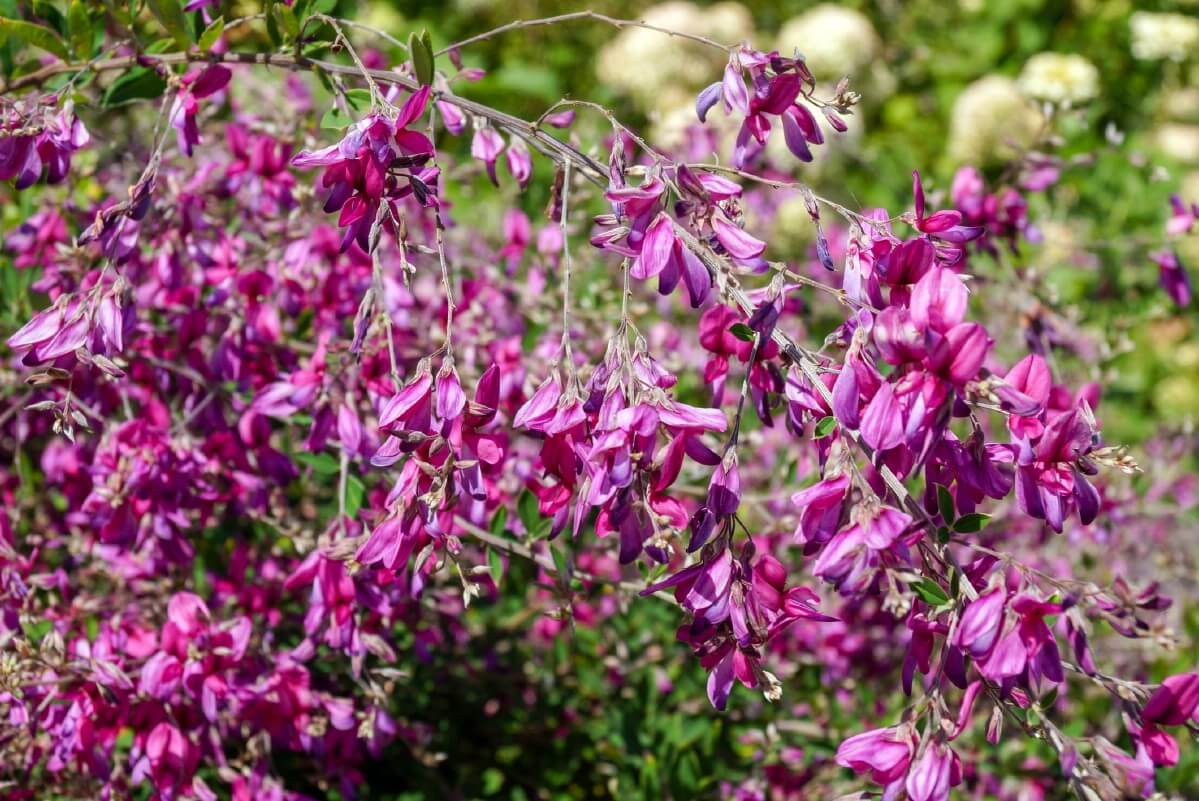
A vastly underutilized perennial shrub, Bush Clover is a charismatic plant that provides essential food for bees, butterflies, and birds. There are many types of Bush Clover, and the most well-known and cultivated are the Asian varieties (Lespedeza thunbergii).
However, there are several lovely North American species that should be given preference in the landscape, if at all possible. Roundhead Bush Clover (Lespedeza capitata) grows clusters of white pea-like flowers with a purple center. Slender Bushclover (Lespedeza virginica) blooms clusters of light pink pea-like flowers. Bush Clover grows tall, stout stems, averaging 2-5 feet tall, and easily grows in less than ideal soil. All types of bees enjoy these flowers, including both long-tongue and short-tongue bees.
Hardy to zones 3-9.
Ashy Sunflower (Helianthus mollis)
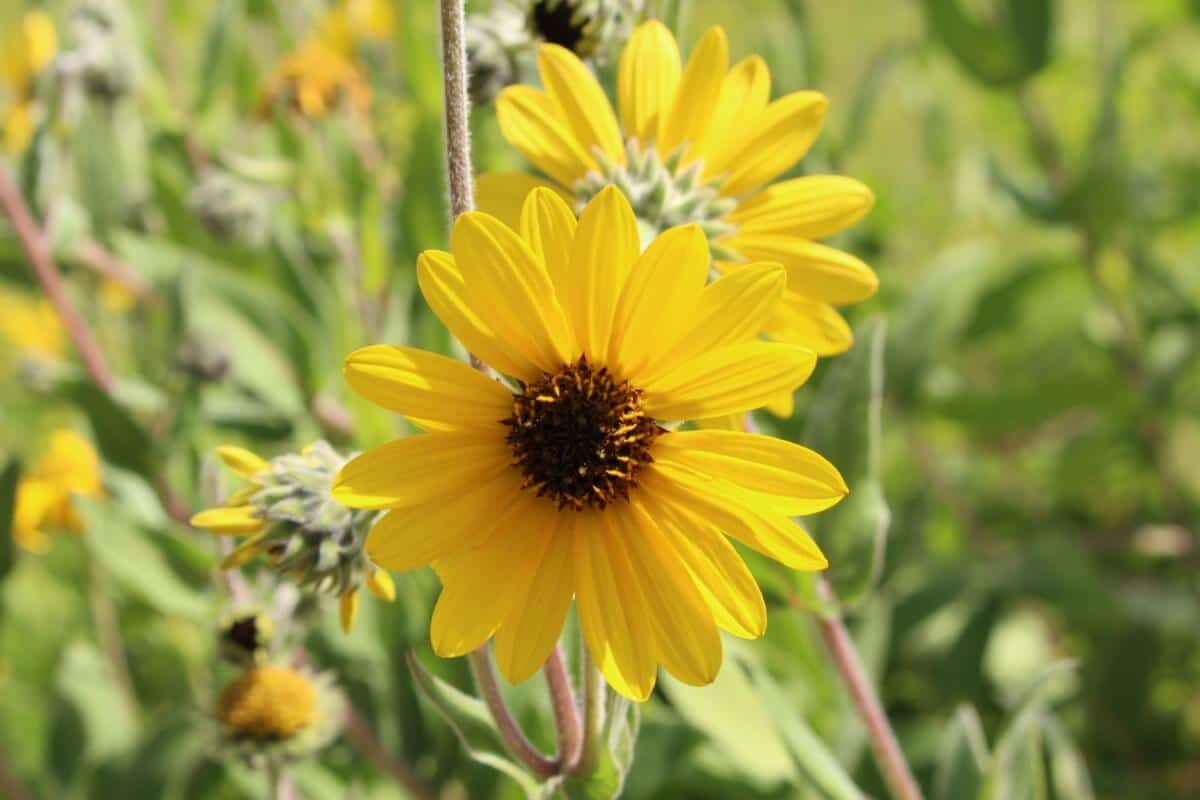
This sunflower is tall and long-lasting, making it a spectacular addition to the landscape. The well-known common sunflower is an annual which needs to be planted yearly, but the Ashy Sunflower is a perennial, so it will show up every summer to brighten your garden.
Ashy Sunflower blooms are bright yellow with a yellow center disk, and they flower prolifically all the way through autumn. Butterflies, bees, and birds visit this low-maintenance native perennial; the latter love eating straight from the seedheads. Hardy to zones 4-9.
Other tall perennial sunflowers to consider are:
Tall Swamp Sunflower (H.simulans), Swamp Sunflower (H.angustifolius), Western Sunflower (H.occidentalis), Sawtooth Sunflower (H.grosseserratus), Ten-Petaled Sunflower (H.decapetalus), Maximilian Sunflower (H.maximiliani), and Nuttall's Sunflower (H.nuttallii).
Coneflowers (Rudbeckia sp.)
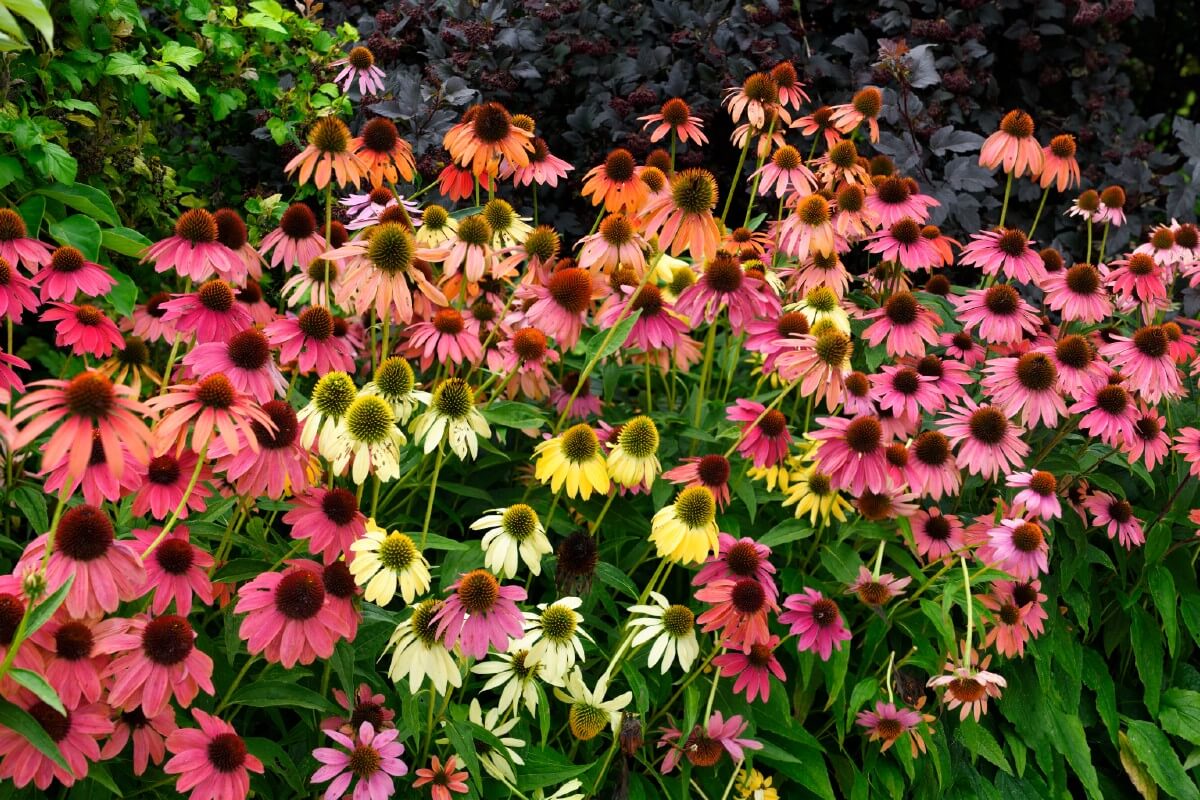
There are a lot of Coneflower varieties to choose from, all of them stately and showy to enhance your garden aesthetic.
Tall Coneflower (R.grandiflora) is exceptionally breathtaking with its abundant bright-yellow blooms atop 3-5 foot stems. The flowers are like sunflowers, with a prominent brown cone protruding from the center.
Each flower is a burst of sunshine, and the bees, butterflies, and pollinators love them. Sweet Coneflower (R.subtomentosa) grows up to 6 feet tall, and its flowers are lighter colored, more butter yellow than sunshine yellow.
Cutleaf Coneflower (R.laciniata) is among the tallest type, often reaching up to 9 feet tall. The flowers are golden yellow, and the cone center is light green when young. Cutleaf Coneflower petals droop around the center cone, like sunbathers basking in the summer rays all season long.
The Western Coneflower (R.occidentalis) is unique among coneflower types; it doesn't produce the large sunflower-like brightly colored blooms we associate with the species. Instead, the Western Coneflower grows a massive tall purplish-brown cone.
When in bloom, a ring of tiny yellow flowers grows around the bottom of the cone; they look like bright little pinheads against the dark-colored cone. While it may not be a traditional ray-of-sunshine Coneflower, it is attractive for its uniqueness and adds variety and interest to the flower garden.
Choose one (or several!) of these native perennial flower species for your natural or wildflower garden and watch the pollinator populations skyrocket. Hardy to zones 3-10, depending on species.
Hardy Hibiscus (Hibiscus moscheutos)

A remarkable Hibiscus variety, the Hardy Hibiscus grows in climates that no other Hibiscus can tolerate. The massive spreading petals and stunningly colored flowers, often with starkly contrasting center colors, bring the tropics to northern gardens across the country.
The Hardy Hibiscus averages 4-7 feet tall, and when it blooms, the flowers appear like dazzling dinner-plate-sized glories. Each flower only lasts a couple of days, but new ones bloom constantly and consistently for months. Hummingbirds, bees, and butterflies all find the flowers as irresistible as we do.
Twenty-eight butterfly and moth species use Hardy Hibiscus as a host plant! One of the other great things about this Hibiscus is the variety of color options; we especially like "Brandy Punch," "Mocha Moon," "Jazzberry Jam," and "Summer Storm." Hardy to zones 5-9.
Blazing Star (Liatris pycnostachya)
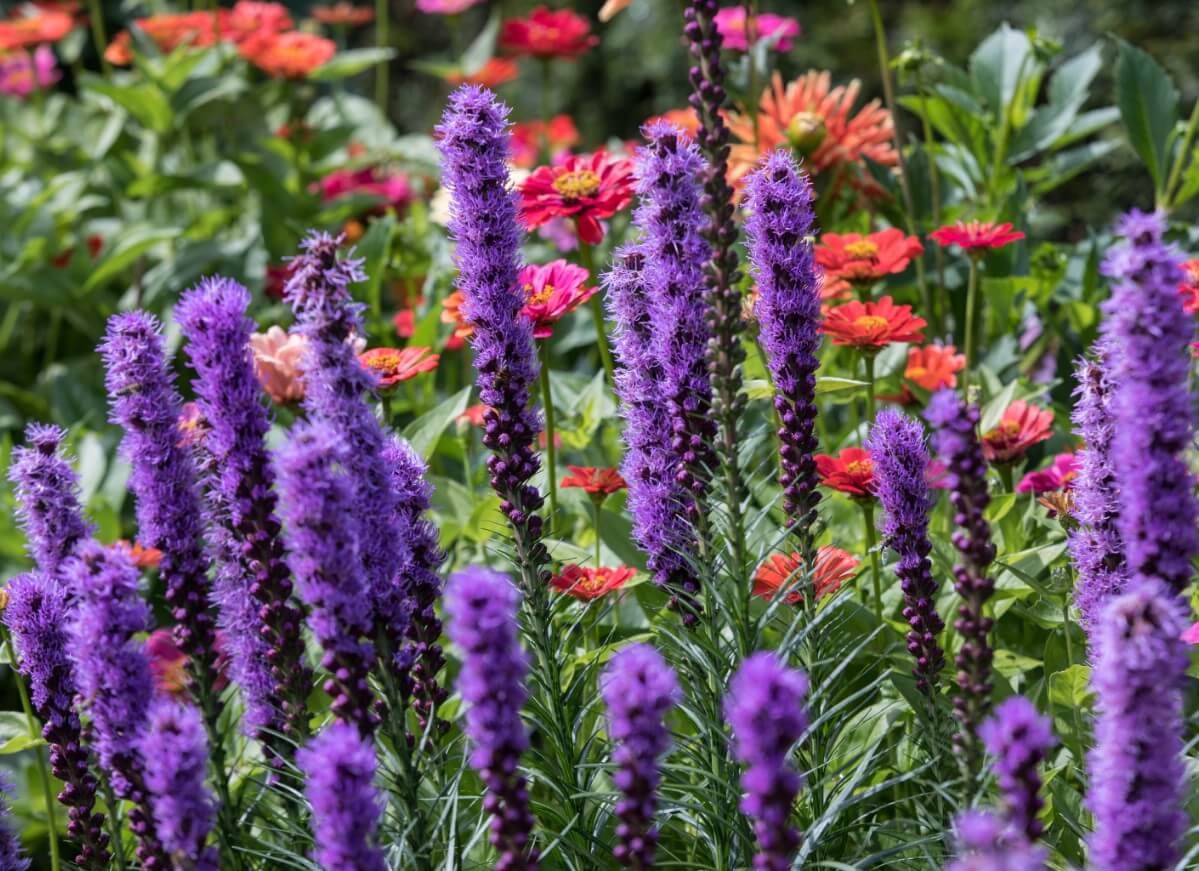
When you want to make a statement in the garden, along the fence line, or down the walkway, plant this tall purple flower and embrace the boldness. Blazing Star flowers are vividly purple and grow on 4-5 foot stems high above the lacy green foliage.
The flowers are fuzzy-looking, densely packed, and bloom in succession down the stem. When this flower is in bloom, it looks like massive fluffy stalks of purple rising up from the garden bed. Hummingbirds, butterflies, and bees all appreciate the enormous display. Liatris is low-maintenance and easy to grow. Hardy to zones 3-9.
American Beautyberry (Callicarpa americana)
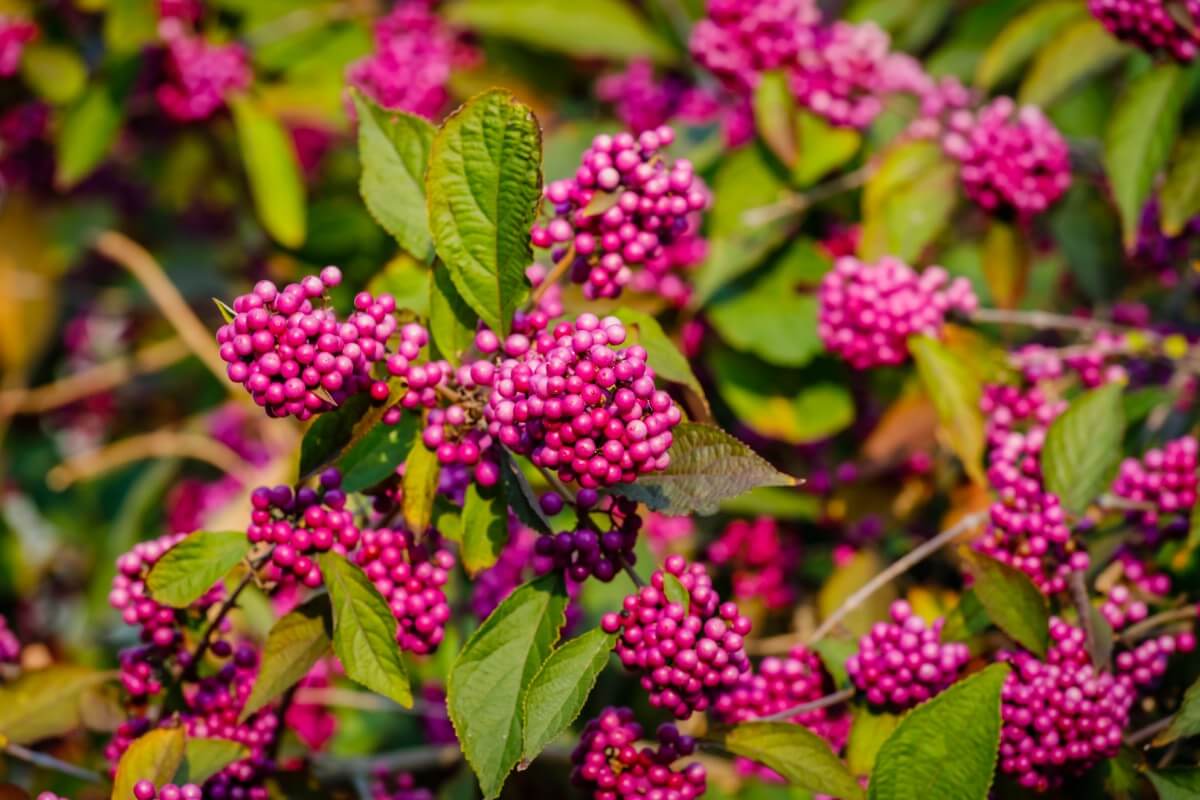
A plant grown for its epic purple berries as opposed to flowers, American Beautyberry is worth planting for its bright appeal and delight to the birds. American Beautyberry berries grow in fall and often last well into winter, providing a valuable food source for wildlife. Beautyberry flowers are inconspicuous pink or white little blooms, that while lovely, definitely aren't the main attraction.
When the berries appear, they wrap around the stem in dense, bright purple clusters. The contrast of brilliant purple berries in the landscape when most other plants are dying back and turning brown makes this native plant even more appealing.
American Beautyberry averages 4-6 feet tall and is hardy to zones 6-10.
Hardy Willow-Leaved Jessamine (Cestrum parqui)
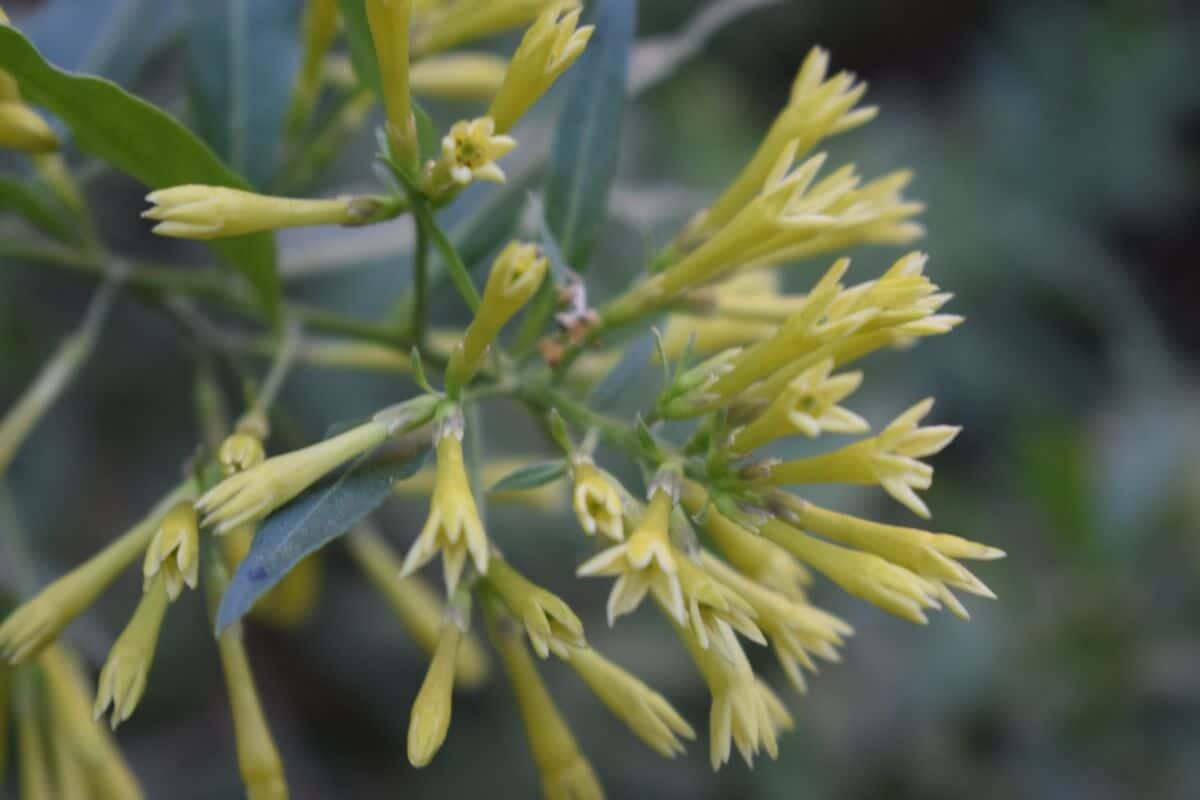
With flowers that smell like sweet almonds, this Jessamine is an intoxicating addition to the garden or landscape. Willow-Leaved Jessamine grows 5-6 feet tall in temperate climates and doubles that height in tropical ones.
The flowers grow so densely and prolifically that it looks as if the bush is smothered with them. Willow-Leaved Jessamine flowers are deep yellow, highly fragrant, and beloved by hummingbirds. Many describe this bush as a 'flowering machine,' and they aren't wrong.
In the early evening, the flowers emit their heady scent, but by morning it's gone. We recommend planting this perennial in a sunny location by the porch or deck, so you don't miss out on the perfume or seeing the hummingbirds.
Hardy to zones 7-10. Night-blooming Jessamine (C.nocturnum) is also a wonderfully fragrant option if you live in zones 9-11.
White Ginger Lily (Hedychium coronarium)
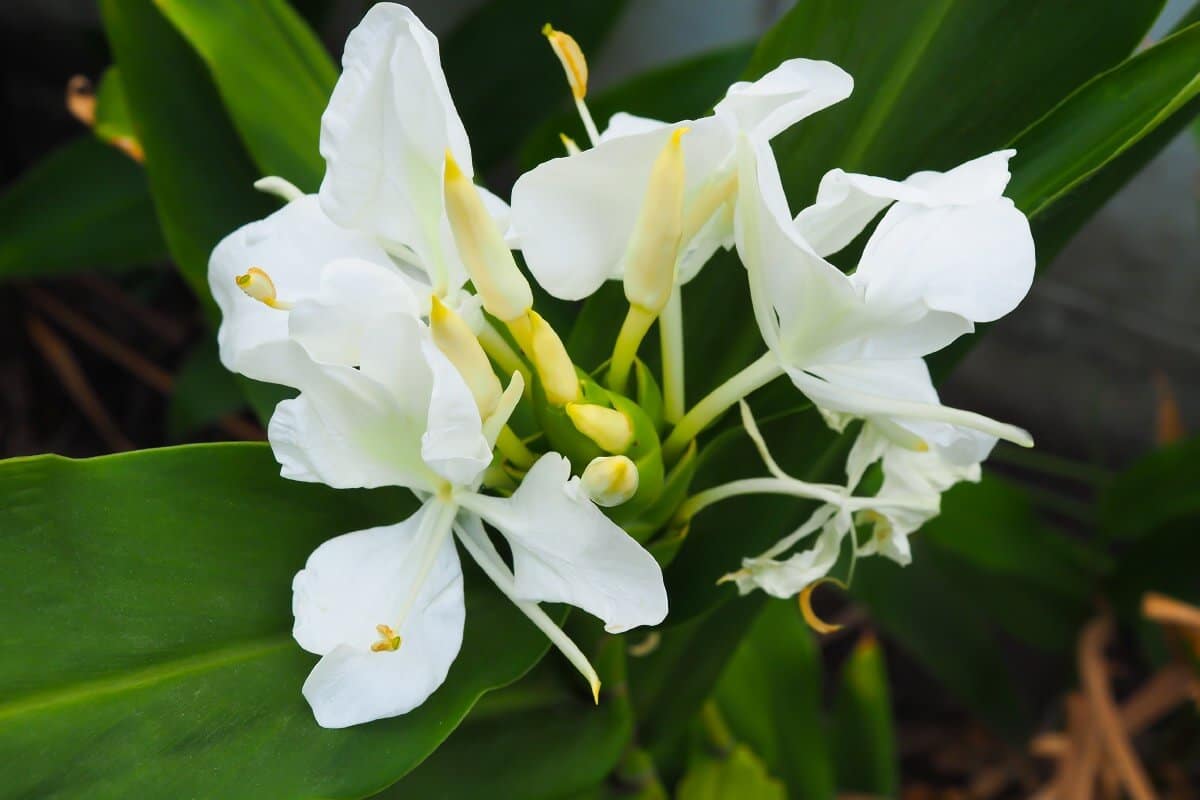
The phenomenal scent of White Ginger Lily is enough reason to plant this perennial, but its height is a draw too. White Ginger Lily flowers bloom atop tall 4-6 foot spiked stems, which grow in dense clusters high above the green foliage.
The individual flowers only last one day; however, they appear so prolifically, you may not notice the short life of each one. In addition to being a hearty bloomer and smelling incredible, White Ginger Lily flowers are also breathtaking. They look like white butterflies dancing atop the stems, with a decidedly tropical aesthetic. Hardy to zones 7-11.
With all these incredible options for tall garden perennials, it can be tough to choose which one (or five) to add to the landscape. Think about the space you have available -- will this be a background perennial or a centerpiece to the flower garden? Consider how these flowers will add height, variation, and intrigue to your garden aesthetic. There are so many variabilities; that's what makes planting flowers so fun!


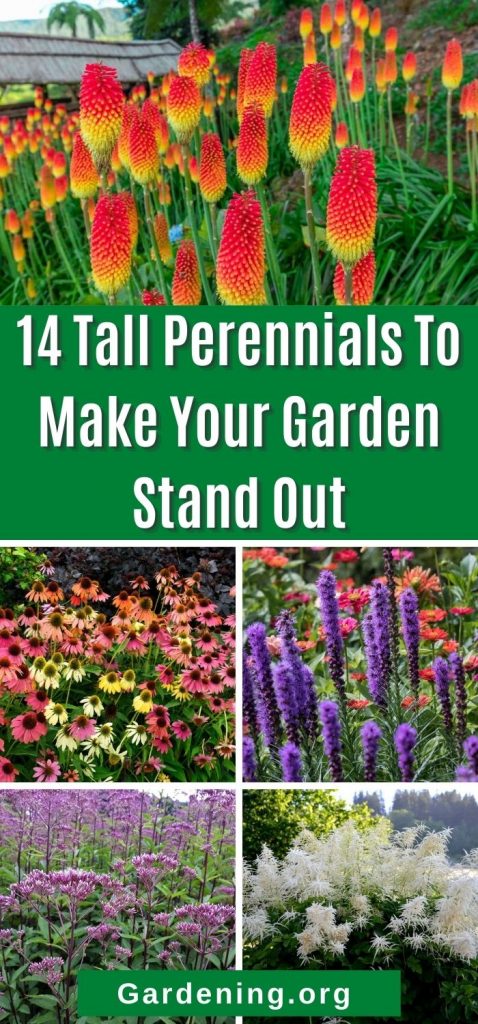

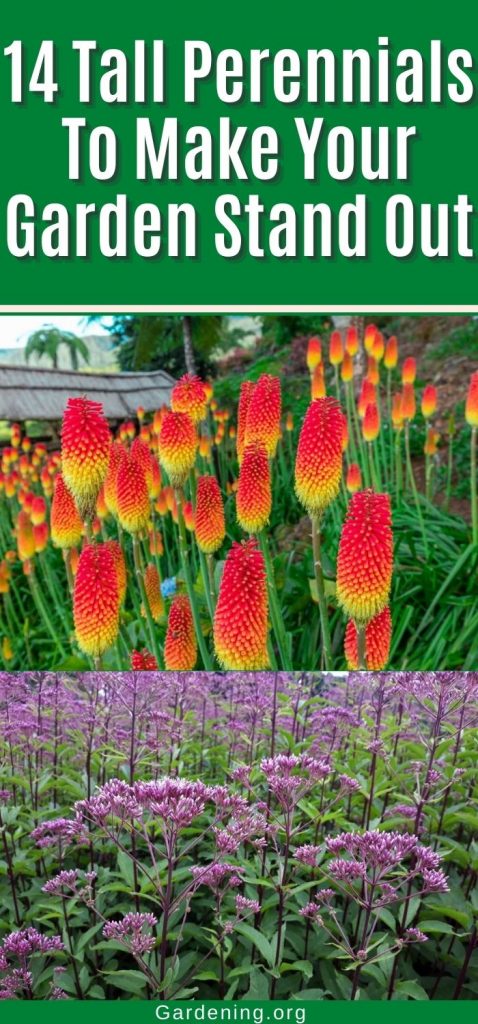

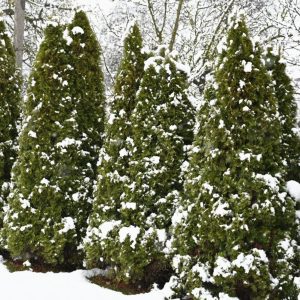


Karen K Green
Love this article. Where do you suggest buys seeds and plants from?? Do you also have a sale site? Thank you. Karen
Jerry wandwi
Very good expression!! Can you help me get DAHLIA seeds or whatever I can plant them in different colours??
A in Tanzania - Daressalaam.
Mary Ward
I'm not sure what access you have in Tanzania or who can ship there, but there is a Dahlia Lover's group on Facebook with people from all over. Maybe someone there could help you?
Kenneth Levine
Do I have to worry about ghh th see perennials spreading uncontrollably in my neighbors yards. I’m on 1/4 acre in a housing development in Delaware, USA.
Mary Ward
I'm sorry I don't know if you're talking about a specific seed, but the general answer is no. Yes, there are some things that spread more easily than others, but as long as you aren't choosing a known invasive you will be fine. Also, their regular weeding, mowing, and maintenance will prevent things from setting in their yard, too. If you are worried about something being invasive in your area, you can Google for a list of invasive species in Delaware. Your state extension service should have one.
Michelle Elliot
Where can I buy torch flowers
Alison Meaux
Where do you buy these seeds ?
Mary Ward
There are many sources online. Try searching for the specific variety you are looking for. You're likely to come up with several options. Amazon is often a fair source for more out-of-the-ordinary seeds.